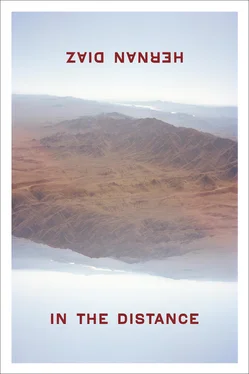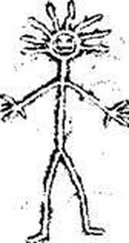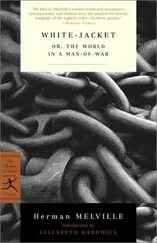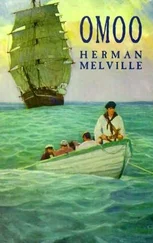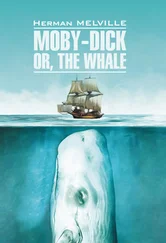“You have seen for yourself how all life is connected, how everything is in everything, and how each single thing radiates to the whole,” Lorimer told Håkan. “All present beings are tied to one another. But this is also true through time. Every natural event flows forth from something else, which flows forth from something else, and so on—a net of tributary veins, rivulets, and torrents rushing away from the headwaters. It follows that each living thing logs within itself the traces and records of all its ancestors. In the course of time, however, minor modifications are introduced, small adjustments and improvements. Where and how this process will end, nobody will ever know, since nothing in nature is ever final—all ends are ephemeral because they are pregnant with new beginnings. But one question we may be able to answer: What was the first source? What was the principle of life? Whence do we come?”
Lorimer left Håkan with the question unanswered for a few days, giving his young student room to think of these matters on his own.
Saladillo was not far away. The desert had become even drier. All plants and visible animal life had disappeared. The dirt was rock-hard, and the lack of dust gave the landscape a final stillness. There was something angular and sharp in that flatness.
They always bivouacked immediately before sundown to make the most of the daylight. Any place was as good as any other. They simply dismounted and sat down. Their tracker was careful to leave his saddle pointing forward to have some immediate reference when he woke up in the blank expanse. Food, water, and fuel were consumed sparingly. They wrapped themselves in homespuns and hides to make up for the small fire they let die out once dinner was cooked. It was during one of these fireless nights, as they were lying in their furs looking up at the stars, that Lorimer revealed his discovery to Håkan.
God did not create man. He created something that became man. If we could only go back in time far enough, millions of ages, our ancestors would start to lose their human features. Little by little, they would look less like men and more like beasts. And if we went all the way back to the dawn of days, we would discover that the creature that fathered us all did not even resemble any animal we have ever seen. We would find Adam, our forefathers’ forefather, to be a passive, translucent gelatin, a blob of marrow bobbing in the otherwise barren ocean.
The history of the transformation from viscous sponge to man, Lorimer said, could be read in the spine. Reminding Håkan of some of his fossils carved into yellow stone, Lorimer explained that in remote times, the spine was a flexible duct made of cartilage. It was only after centuries upon centuries that this rubbery tube wrapping the marrow would ossify, hardening into the dorsal spine, as we know it today. But this cartilage was not just a conduit or a sheath for the marrow. It was, itself, fossilized marrow. And the marrow, in turn, was a projection of the brain. Brain, marrow, and spine were the same substance at different stages. And if all our limbs stemmed from and were subordinated to the spine, it followed that our entire body was a projection of the brain. The brain came first. And, quoting a South American naturalist whose name Håkan could not retain, Lorimer inferred that this principle could be applied to natural history as well. All species, in their inexhaustible varieties, sprung from one single source—a simple cerebral ganglion. All beings are simply dilations of this organ, of this primeval intelligent matter that contained in itself all the possibilities of future life forms. The qualities of each species are determined by how long they have been in the making or at what point, down the stream of time, they deviated from the original source. We had progressed from a shapeless intelligent being that was our remote but direct ancestor. A bodiless brain. Over the course of many millions of years, this thinking ganglion forged for itself the material structures that would become its frame and its instruments—in other words, the brain generated its own body. It was almost as if the cerebrum had thought and willed the rest of its anatomy into existence. At this point, Lorimer reminded Håkan of how, from the embryos in different stages he had shown him, it could be deduced that the skull itself goes through the progressive stages that define the development of the human species—from membrane to cartilage to bone. The skull, then, is the most primitive rigid formation. It developed as a box encasing the brain to shield it from a hostile environment. The spine resulted from the skull (whose structure is roughly replicated in each vertebra), and from this central column, particular appendages would stem out, members that later would become limbs, necessary to ensure the brain’s survival. From this, a most significant revelation followed. Because he is the supreme intellectual creature, man has to be, necessarily, the very first form of life to have appeared and developed from that original thinking substance—the oldest being on the planet, still growing, through all the anteceding ages, from that earliest of all seeds. The inescapable and stunning conclusion of this was that human intelligence, in some form, must have preceded all organic matter on Earth.
This was the great discovery Lorimer had made traveling the plains and collecting his specimens, and now he was determined to find the final piece of evidence necessary to support it. All signs suggested that the intelligent proto-organism of which men are the most direct descendants first came to life in water (more specifically in salt water), where it would have vegetated like a thinking shell-less mollusk. Exploring the bottom of the ocean for proof of its existence was, of course, not a possibility. But luckily enough, there were some seabeds one could walk on. One such sea floor was the great salt lake of Saladillo. Formerly a landlocked sea, Saladillo had dried out millions of years ago, and given the inaccessible location and the extreme conditions of this salt flat, Lorimer expected it to be untouched by man. If confirmation of the existence of this first creature, this disembodied brain, could be found anywhere, it would be in Saladillo.
Silence followed Lorimer’s discourse. What Håkan had just been told seemed to him as remote as the stars above—so distant from any idea ever taught to him, so removed from any thought that he could have come up with himself, that it would have defied even his brother’s imagination. Linus’s wildest tales were tame compared to Lorimer’s narrative, and everything in Håkan’s mind compelled him to dismiss what he had just heard. His limited knowledge of the Bible, his common sense, and, above all, his own humanity made it impossible for him to believe that his seniors, no matter how removed, had been animals. Had he understood Lorimer’s rudimentary Swedish correctly? Even more outrageous and insulting was the notion of that primordial snot. Had he not been created in god’s image? What, then, was god? And if this process was, as Lorimer claimed, still in motion, what would men become in the distant future? Would those faraway descendants regard his own bones as the carcass of some primitive beast?
And yet, despite his profound misgivings, Håkan felt his own past (with all that he thought he knew, with his father’s few firm words, with the minister’s unquestioned doctrine, and even with his brother’s lovely stories) dissolve into the night and fade in the presence of the impressive and awful history he had just heard.
The light was suffocating. They were gagged, stuffed, choked with whiteness. Through tears and fluttering eyelids they could barely make out the plain—as level and as blinding as a frozen lake. Despite the thumping heat, Håkan’s first reflex was to look down to make sure they were standing on thick enough ice. On the frosted flats, a raised beehive pattern, each cell about four feet at its widest point, extended in every direction as far as the eye could reach. The design was surprisingly regular, and the lines of salt, protruding an inch or two, collapsed with a crunch under the wagon wheels but were often strong enough to resist the weight of their steps. The horizon was a noose.
Читать дальше
